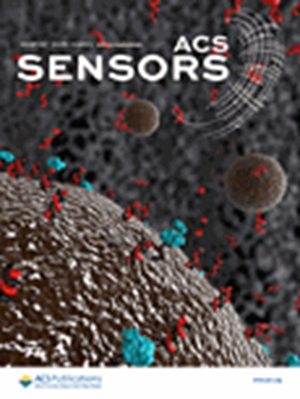Dual-Functional Monomer-Based Molecularly Imprinted Light-Addressable Photoelectrochemical Platform for Multichannel Detection of Molecules with Various Sizes.
IF 9.1
1区 化学
Q1 CHEMISTRY, ANALYTICAL
引用次数: 0
Abstract
The emerging molecularly imprinted polymer (MIP) films, combined with various transducers, have drawn significant attention for biomarker detection. Currently, MIP films exhibit inferior performance and a limited detection variety range when detecting macromolecules because MIP films are unable to form effective cavities for macromolecule detection and their poor electrical and optical properties do not meet the requirements of transducers. To address these problems, MIP films were fabricated by dual-functional monomers (o-phenylenediamine and pyrrole) in this work. MIP films were further integrated with a photoelectrochemical (PEC) transducer based on gold nanoclusters (AuNCs) to develop MIP-PEC sensors. Experimental results indicated that dual-functional monomers significantly enhanced the form of effective cavities with controllable number and orientation, electrical properties, and optical properties of the MIP film. Furthermore, the introduction of the MIP film onto AuNCs improved the stability of the MIP-PEC sensor and formed a heterojunction to enhance the photoelectric property of the sensor. Then, the sensing mechanism was elucidated with structural competitive binding, including size, shape, and binding sites, through cross-detection of PD-L1, CYFRA21-1, and cortisol with MIP-PEC sensors of varying cavity sizes. Finally, MIP-PEC sensors were expanded to a light-addressable MIP-PEC platform to detect PD-L1, CYFRA21-1, cortisol, and 4-methoxyphenylacetic acid in blood samples from patients with nonsmall cell lung cancer for early diagnosis and treatment evaluation. Therefore, the combination of dual-functional MIP films with PEC transducers represents a promising strategy for the high-sensitivity detection of molecules with various sizes, particularly for macromolecules. The light-addressable MIP-PEC platform provides a novel approach for the multichannel detection of multiple biomarkers.基于双功能单体的分子印迹光寻址光电电化学平台,用于多通道检测不同大小的分子。
新兴的分子印迹聚合物(MIP)薄膜与各种传感器相结合,引起了生物标志物检测领域的广泛关注。目前,MIP薄膜在检测大分子时表现出较差的性能和有限的检测品种范围,因为MIP薄膜不能形成有效的大分子检测空腔,并且其较差的电学和光学性能不符合换能器的要求。为了解决这些问题,本工作采用双功能单体(邻苯二胺和吡咯)制备了MIP膜。将MIP薄膜与基于金纳米团簇(aunc)的光电化学(PEC)传感器进一步集成,以开发MIP-PEC传感器。实验结果表明,双功能单体显著增强了MIP膜的有效空腔的形成,有效空腔的数量和取向都是可控的。此外,在aunc上引入MIP薄膜提高了MIP- pec传感器的稳定性,并形成异质结,提高了传感器的光电性能。然后,通过不同空腔大小的MIP-PEC传感器交叉检测PD-L1、CYFRA21-1和皮质醇,通过结构竞争结合(包括大小、形状和结合位点)阐明了传感机制。最后,将MIP-PEC传感器扩展为可光定位的MIP-PEC平台,用于检测非小细胞肺癌患者血液样本中的PD-L1、CYFRA21-1、皮质醇和4-甲氧基苯乙酸,以进行早期诊断和治疗评估。因此,双功能MIP膜与PEC传感器的结合代表了一种有前途的策略,用于高灵敏度检测各种大小的分子,特别是大分子。光寻址MIP-PEC平台为多种生物标志物的多通道检测提供了一种新方法。
本文章由计算机程序翻译,如有差异,请以英文原文为准。
求助全文
约1分钟内获得全文
求助全文
来源期刊

ACS Sensors
Chemical Engineering-Bioengineering
CiteScore
14.50
自引率
3.40%
发文量
372
期刊介绍:
ACS Sensors is a peer-reviewed research journal that focuses on the dissemination of new and original knowledge in the field of sensor science, particularly those that selectively sense chemical or biological species or processes. The journal covers a broad range of topics, including but not limited to biosensors, chemical sensors, gas sensors, intracellular sensors, single molecule sensors, cell chips, and microfluidic devices. It aims to publish articles that address conceptual advances in sensing technology applicable to various types of analytes or application papers that report on the use of existing sensing concepts in new ways or for new analytes.
 求助内容:
求助内容: 应助结果提醒方式:
应助结果提醒方式:


